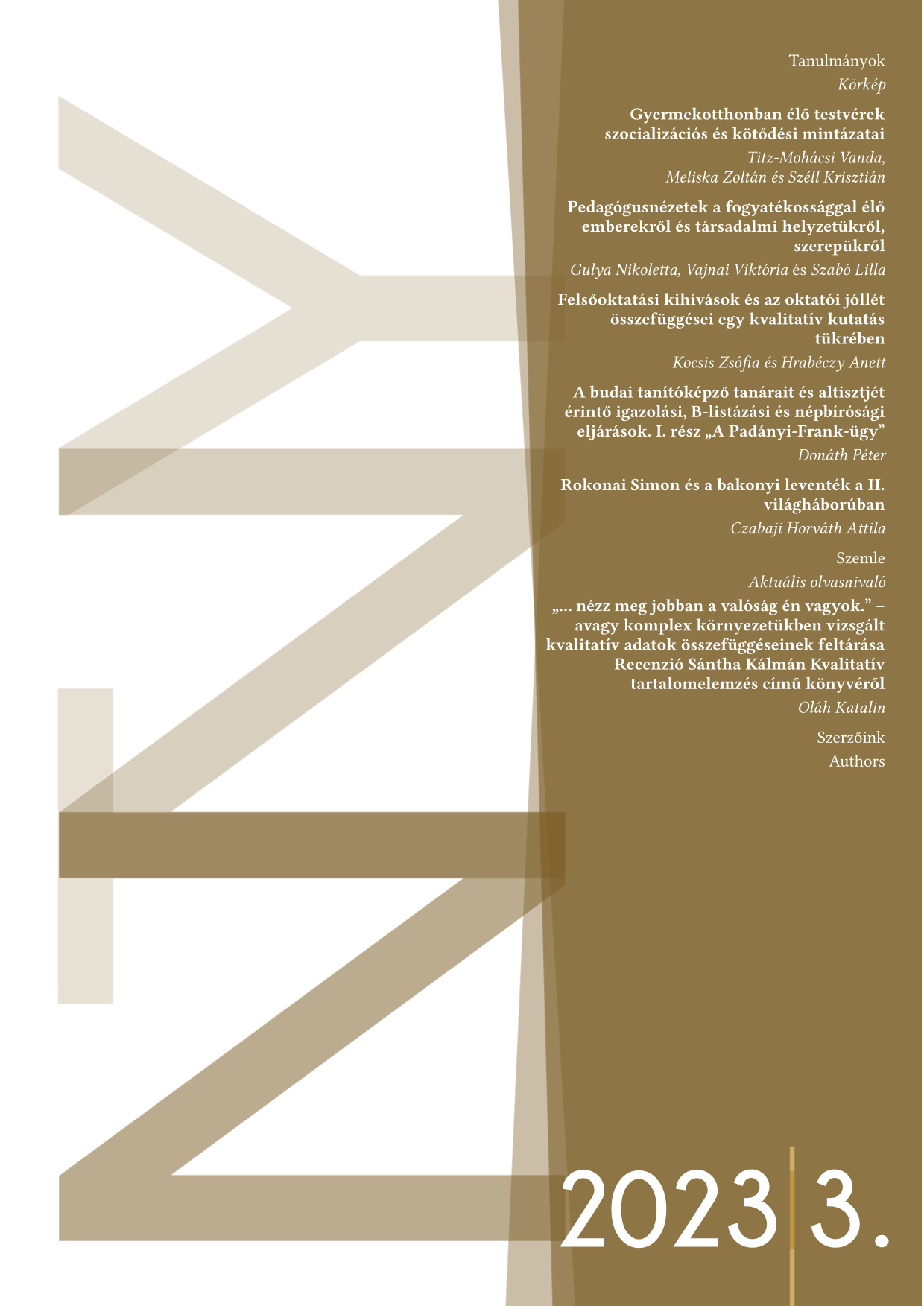Abstract
Several actors and interactions impact early socialisation and attachment patterns in family and residential care. A responsible reference person is indispensable for developing emotional stability, while healthy cognitive development necessitates a flexible and well-structured environment. The present study aims to unveil through the perceptions of sibling groups and their caretakers some of the socialisation and attachment patterns of children and youths living outside their birth families in residential care. We gain insight into their roles in these complex procedures by discerning the actors (parents, siblings, soulmates, close friends outside the institution, caretakers, and the school). The study is based on ethnographic research conducted with children (7) and their caretakers (5). It uses a mixed methodology of observations, interviews, and informal conversations, complemented by additional information from the children's files. The results show that caretakers take on parents' various roles and functions; thus, they become essential social actors connecting children with their families and the school. Sibling relationships exhibited signs of both strong and weak attachment, calling for the quality of ambivalence. Soulmates (friends' inside') appear to be playmates or gang peers. In contrast, friends outside represent a link to the 'outside world' and have the potential to show models of a well-functioning family with healthy interpersonal relationships. The perception of the role of the school is two-sided in the life of children in residential care: it connects them to the world outside the institution, while it poses the challenges of success and failure.
